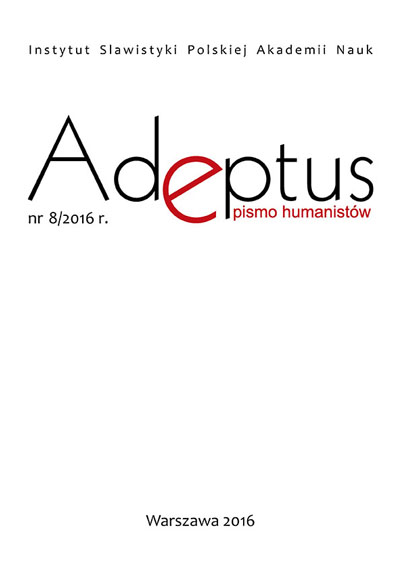Ciało i świętość. Przypadek XIX-wiecznych świętych starców rosyjskich
The body and the sanctity. The case of the 19th-century Russian holy startsy
Author(s): Stanisław GrygielSubject(s): Cultural history, Social history, 19th Century
Published by: Instytut Slawistyki Polskiej Akademii Nauk
Keywords: Startsy; Optina Pustyn; St. Seraphim of Sarov; starets Zosima; Nicholas II; relics; Fyodor Dostoyevsky; body
Summary/Abstract: The article considers references to the body appearing in selected texts concerning 19thcentury Russian holy startsy. Three conditions of a holy man’s body are discussed: living, immediately after death and as relics. The body plays an important role in creating the image of holiness of startsy during their lifetime. In the chapter The Breath of Corruption in Fyodor Dostoyevsky’s Brothers Karamazov, the sacred status of starets Zosima’s dead body is cancelled by the crowd’s interpretation of his body’s putrefaction as judgment of God refuting the holiness of the deceased monk. This, in turn, allows for a discrediting the life of the starets. Mirroring the events of Dostoyevsky’s novel, the dead body of a monk became subject of dispute shortly before the canonization of the starets Seraphim of Sarov in 1903. Drawing on the commonness of the view identifying putrefaction of the body with profanity, a Petersburg anti-Orthodox association sought to discredit the Russian Orthodox Church by demanding that the coffin of Seraphim of Sarov is reopened. The answer of Antonius, the Metropolitan of Petersburg, was an article, in which he argued that inviolability of the body was not a necessary condition of holiness. During the canonization, the adored relics of Saint Seraphim were used by the state power to strengthen the bond between Tsar Nicholas II and the people.
Journal: Adeptus
- Issue Year: 2017
- Issue No: 09
- Page Range: 1-21
- Page Count: 21
- Language: Polish

